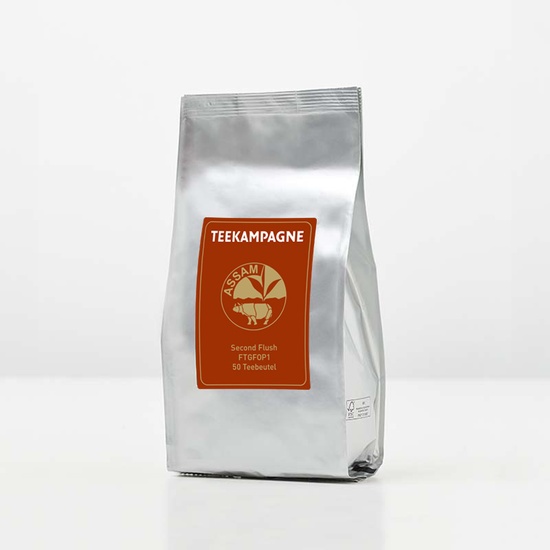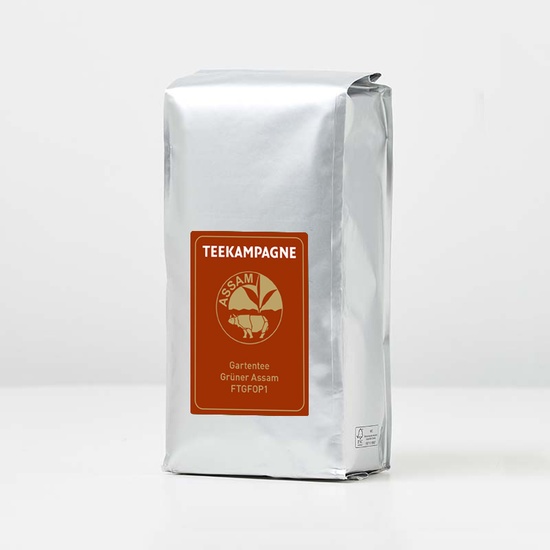© 2025 Projektwerkstatt GmbH

Assam Tea
Assam Second Flush
Mehr lesenSchließen
In Assam high quality teas are usually manufactured by the orthodox method. In this context orthodox refers to the traditional way of tea production. The tea leaves are withered, rolled, oxidised (fermented), dried and sorted.
Especially the summer harvest in Assam, the Second Flush, is a very well-balanced full-bodied tea with nuances of malt, a captivating fragrance and a cup of polished dark copper.
Especially the summer harvest in Assam, the Second Flush, is a very well-balanced full-bodied tea with nuances of malt, a captivating fragrance and a cup of polished dark copper.
Green Assam
Mehr lesenSchließen
If you are looking for an organic tea that hasn’t been oxidated (fermented) then green tea is your tea! It is manufactured from the same tea bushes as black tea. The freshly plucked leaves are shortly exposed to heat (usually hot water steam). The heat prevents the oxidation of the leaves’ cell sap with the natural occurring oxygen in the air. The undermining of the oxidation process (sometimes also referred to as fermentation) causes the tea leaves to keep their green colour and their primary taste and properties. Green Assam is a rarity you shouldn’t miss: full-bodied and fresh in taste.
Assam is a federal state in the northeast of India and world famous for its tea growing area in the lowlands along the mighty river Brahmaputra. The tropical climate boosts the growth of tea plants with large leaves that produce rather full-bodied teas. Since 2017 we offer teas from Assam. Our Assam teas (like our Darjeeling teas) are manufactured by the “orthodox method” and have the leaf grade FTGFOP1. Indulge in their fineness.
Ansicht:
Ansicht:
Assam - unique teas from the lowlands
In the local language Assam means something like unique. The leaves of Assames tea bushes are quite impressive. Due to the tropical climate they are much larger than their Chinese relatives. The majority of teas from Assam are produced by the CTC method, meaning they underwent the faster way of production encompassing of crushing, tearing and curling. However, high quality teas are manufactured in the orthodox way: The tea is withered, rolled, oxidised (fermented), dried and sorted.
Assam tea has quite a high content of tannins that destines it for stronger tea blends. The tea from the summer harvest is called Second Flush. It’s a full-bodied tea with notes of malt, a captivating fragrance and a cup of polished dark copper.
The state of Assam is not only known for its tea but also for his breathtaking natural beauty. Tropical rainforests, lush woods, wet- and grassland are the habitat of numerous species and making it one of the richest areas of biodiversity on this planet. Kaziranga National Park is home of the endangered Indian rhino – the animal the Tea Board of India has chosen on its label for pure Assam tea.



